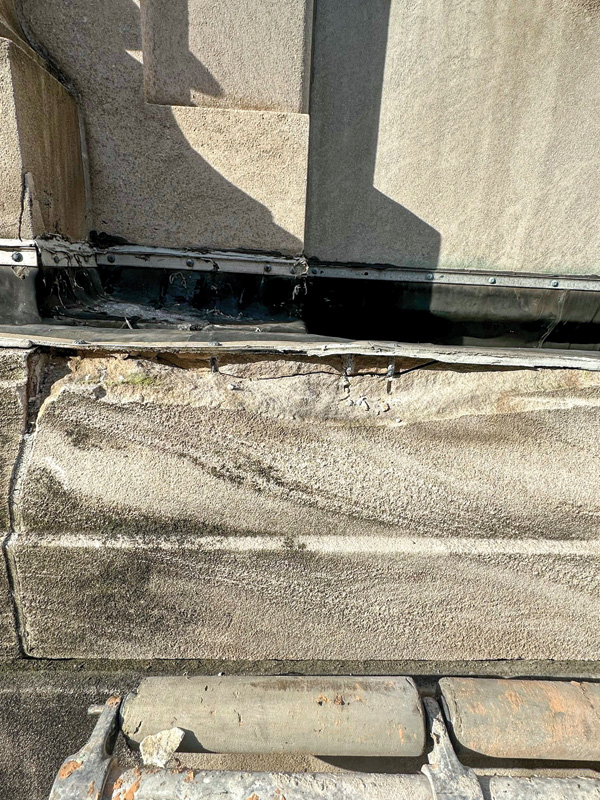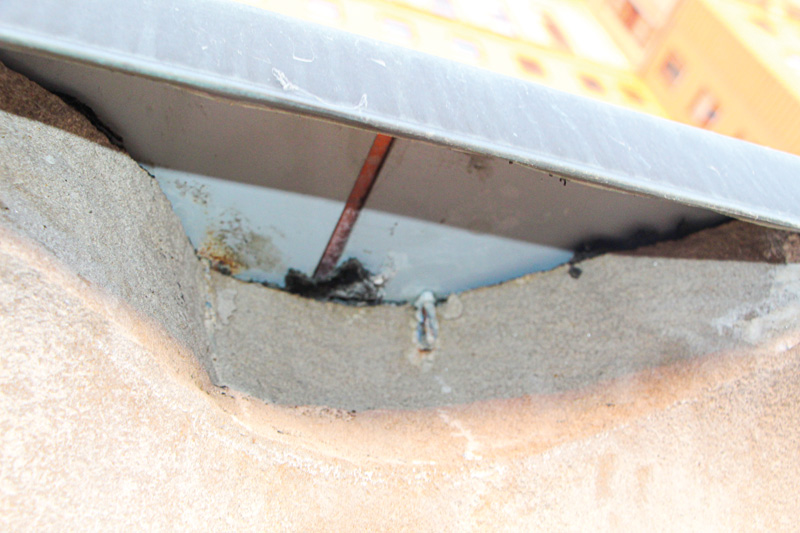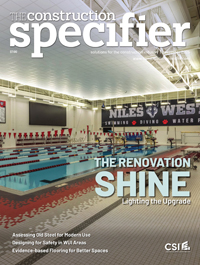Respect the edge distance

In many assemblies, anchors need to be embedded in stone or similar masonry substrates. Honoring anchor edge distances is an important design consideration. Significant stone masonry repair was required in two recent projects where appropriate edge distances were not provided.
In the first example, a roofing termination bar was installed on a profiled coping in a historic limestone-clad building in the Midwest. The roofing termination was anchored to the limestone coping with nail-in anchors with an edge distance of only 38 mm (1.5 in.). This caused loose spalls to develop in the stone at many anchors three stories above the adjacent street, presenting a falling debris hazard (Figure 1). A contractor was engaged to remove the loose material, and the stone coping is currently scheduled for replacement. An increased edge distance would have helped avoid this problem, and combined with a different roofing termination detail, it may have been possible to avoid the situation altogether.

The next example, from an institutional building in the Midwest, involves sheet metal flashing installed to protect the stone cornice and secured by cleats at the outside edge. The cleats were secured with nail-in type steel anchors positioned approximately 50 mm (2 in.) from the edge of the stone. Unfortunately, even this edge distance was insufficient to prevent cracking and spalling at the thin outer edge, particularly at joints between segments of the continuous cleat where two fasteners were installed a few inches apart (Figure 2). Installation of the flashing system, intended to protect the stone, caused significant damage and a life-safety hazard from falling overhead material.
In general, anchors should be positioned a minimum of 75 mm (3 in.) from the edge of natural stone units. The critical distance depends on the size and type of anchor, the substrate’s type and configuration, and the connection’s geometry. While anchor manufacturers may indicate minimum edge distances in product data, these distances are typically based on the structural performance of the anchor and its use in a reinforced concrete structure. The indicated distances may not be sufficiently conservative for a natural stone substrate. Some anchors, such as nail-in anchors or expansion bolts, may impart more stress into the substrate as compared to screw or adhesive anchors. Less intrusive fasteners are appropriate for substrates on historic structures.
Minimum edge distance requirements for anchors should be clearly specified. While locating anchors away from edges and corners may require larger straps, longer cleats, or similar modifications, the cost of these materials is far less than repairing damaged masonry. In some cases, an alternative detail can be provided to eliminate the need to anchor near the edge of the stone. For example, in the second project, the proposed remediation includes the use of rigid plywood underlayment that can be secured near the center of the stone, providing a suitable substrate for anchorage for the sheet metal close to the outer drip edge.
Kenneth Itle, AIA, is an architect and associate principal with Wiss, Janney, Elstner Associates (WJE) in Northbrook, Ill., specializing in historic preservation.
He can be reached at kitle@wje.com.
Andrew Lobbestael is a structural engineer and senior associate with Wiss, Janney, Elstner Associates (WJE) in Detroit, Mich. He can be reached at alobbestael@wje.com.




